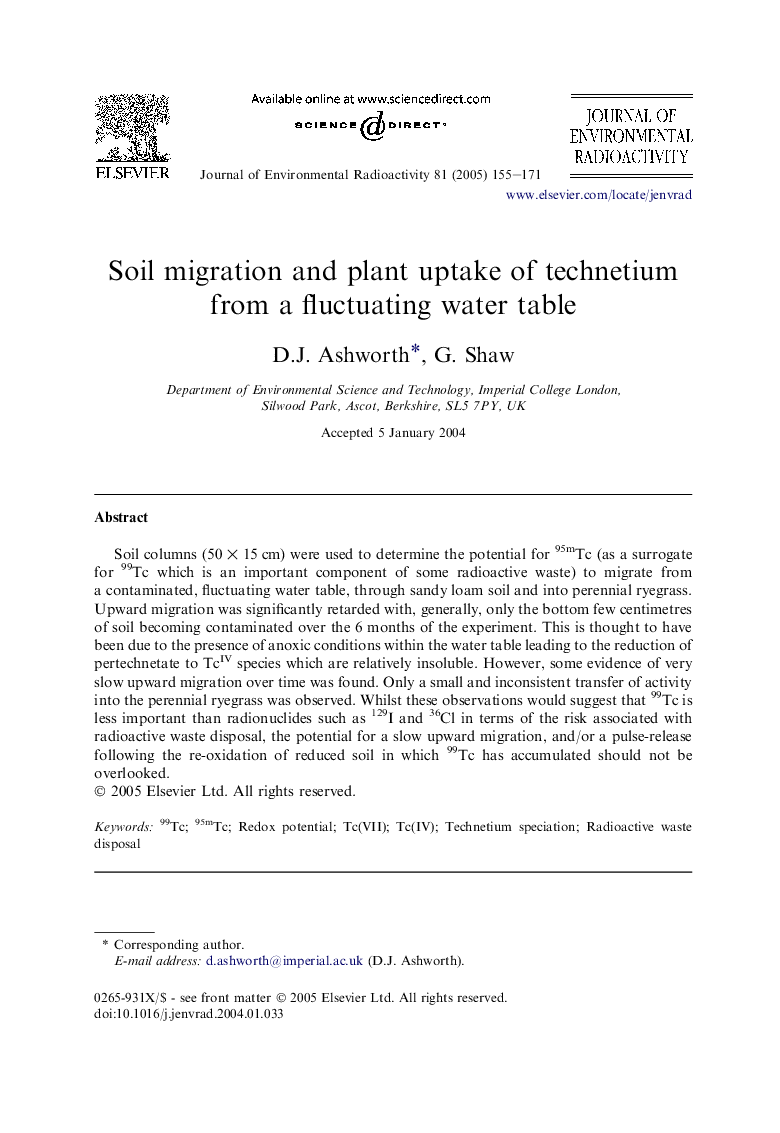| Article ID | Journal | Published Year | Pages | File Type |
|---|---|---|---|---|
| 9825156 | Journal of Environmental Radioactivity | 2005 | 17 Pages |
Abstract
Soil columns (50Â ÃÂ 15Â cm) were used to determine the potential for 95mTc (as a surrogate for 99Tc which is an important component of some radioactive waste) to migrate from a contaminated, fluctuating water table, through sandy loam soil and into perennial ryegrass. Upward migration was significantly retarded with, generally, only the bottom few centimetres of soil becoming contaminated over the 6 months of the experiment. This is thought to have been due to the presence of anoxic conditions within the water table leading to the reduction of pertechnetate to TcIV species which are relatively insoluble. However, some evidence of very slow upward migration over time was found. Only a small and inconsistent transfer of activity into the perennial ryegrass was observed. Whilst these observations would suggest that 99Tc is less important than radionuclides such as 129I and 36Cl in terms of the risk associated with radioactive waste disposal, the potential for a slow upward migration, and/or a pulse-release following the re-oxidation of reduced soil in which 99Tc has accumulated should not be overlooked.
Related Topics
Physical Sciences and Engineering
Energy
Nuclear Energy and Engineering
Authors
D.J. Ashworth, G. Shaw,
